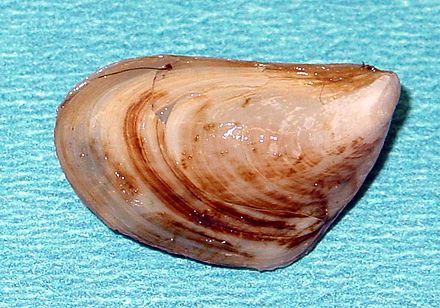What are Quagga mussels?
Quagga mussels are a freshwater mussel native to Ukraine.
Quagga mussels are small, about the size of a dime. They are similar to the Zebra mussel, another invasive mussel species.
Quagga mussels are currently of large concern in the Great Lakes and in the Southwest US.

Why do we hear so much about Quagga mussels?
Quagga mussels are disrupting natural ecosystems in many lakes and rivers. There is an active effort to prevent the spread of Quagga mussels and decrease the damage done to habitats where they’ve been introduced.
Quagga mussels are an invasive species in the United States. They reproduce quickly and disrupt the natural habitat of other species when they are introduced to a new body of water.
Lifecycle
The Quagga mussel is known for reproducing quickly, which makes it difficult to contain when introduced to new environments. Along with many other freshwater mussels, the Quagga reproduction cycle incorporates fish species.
Stage 1: Sperm & Egg
The male mussel releases its sperm into the water.
Nearby female mussels draw in the sperm and fertilize eggs internally.
Once those eggs are fertilized, they develop into larvae called glochidia.
Stage 2: Larvae (glochidia)
The glochidia are released by the female into the water. The purpose of this release in such an early stage is to have the tiny larvae find a new home where they will be able to further develop from larvae into juvenile mussels.
Stage 3: Parasitic Hosting in Fish
